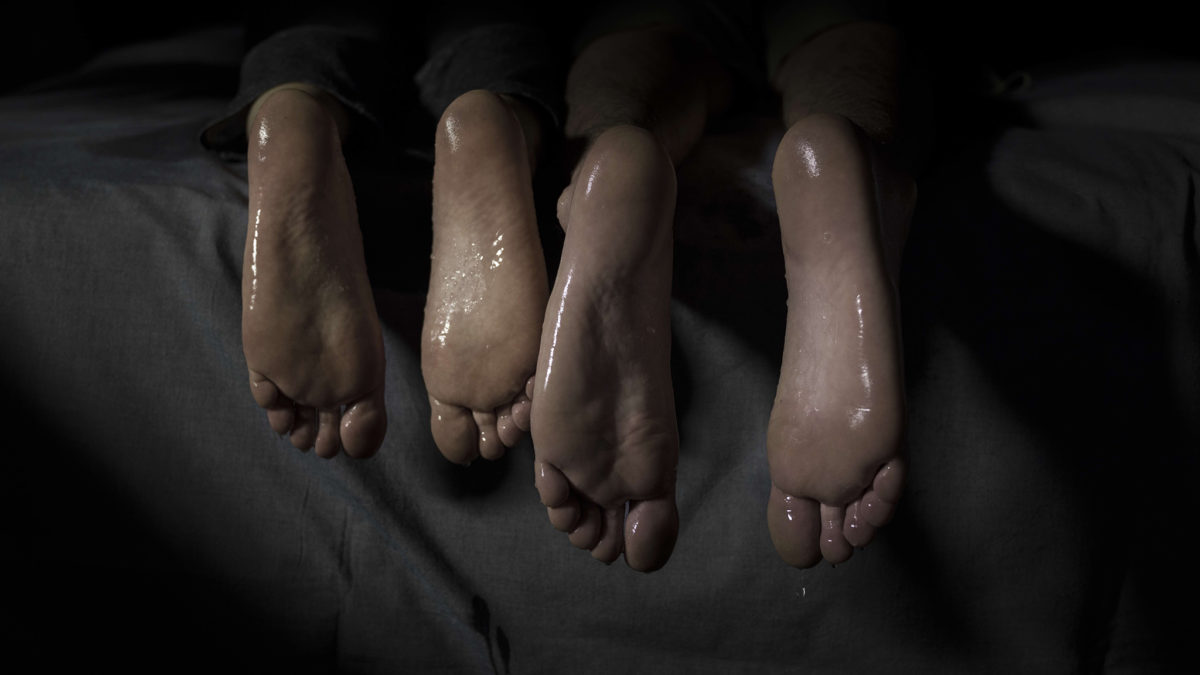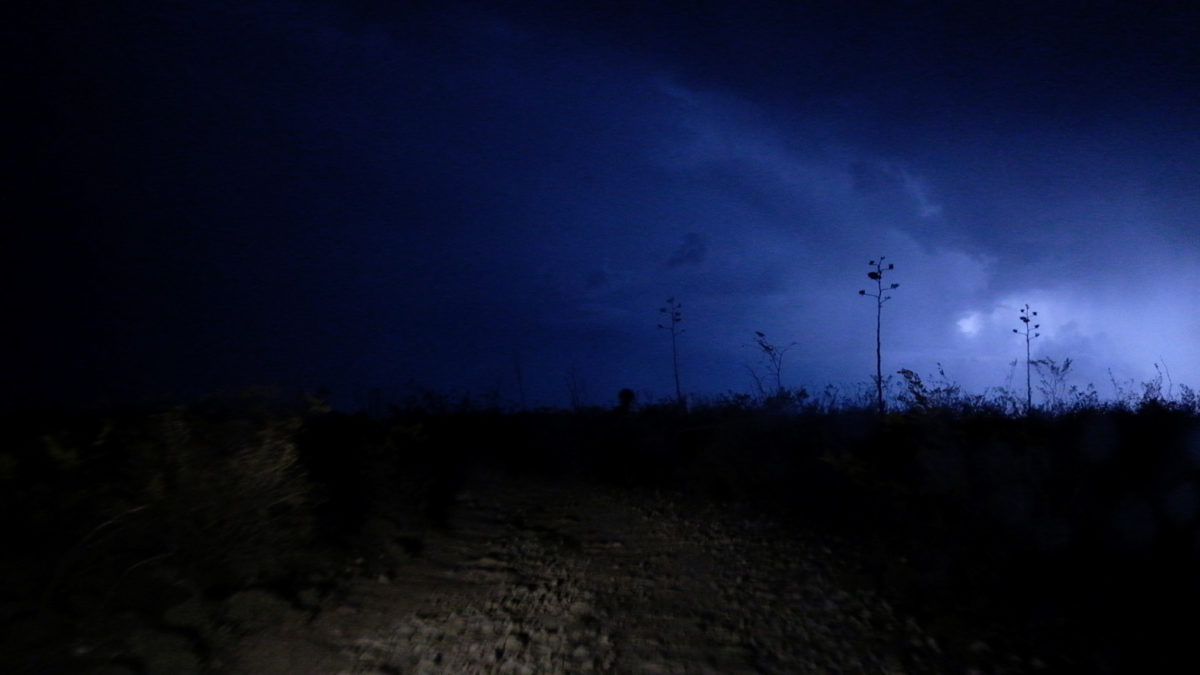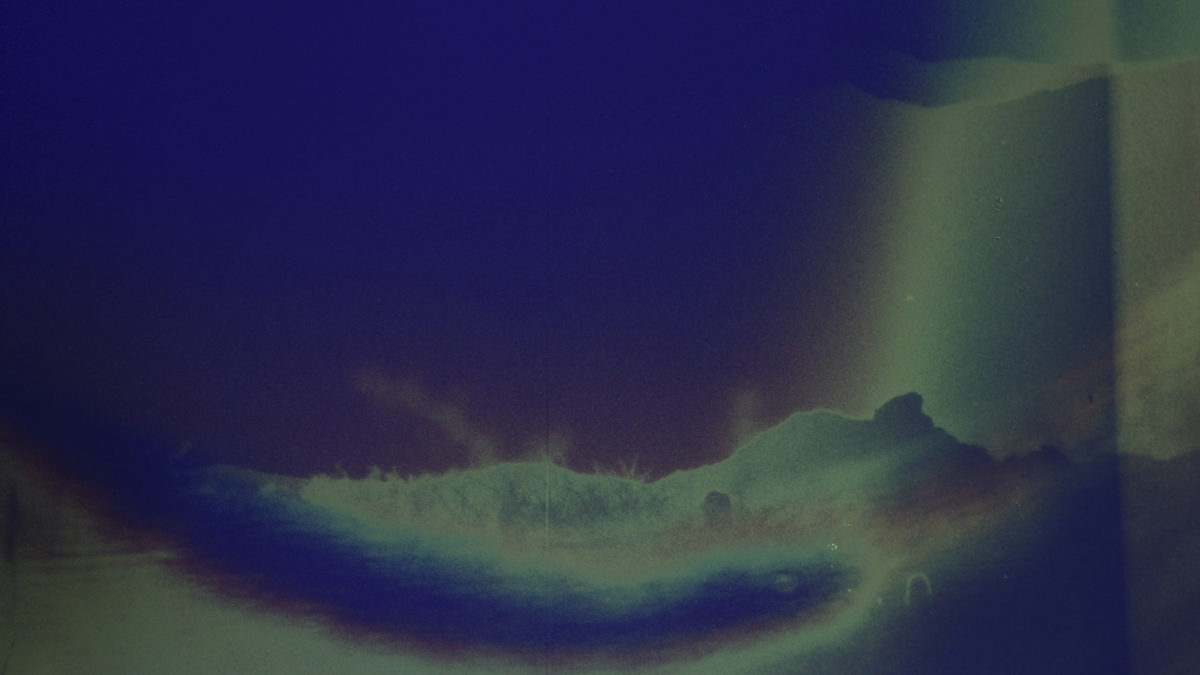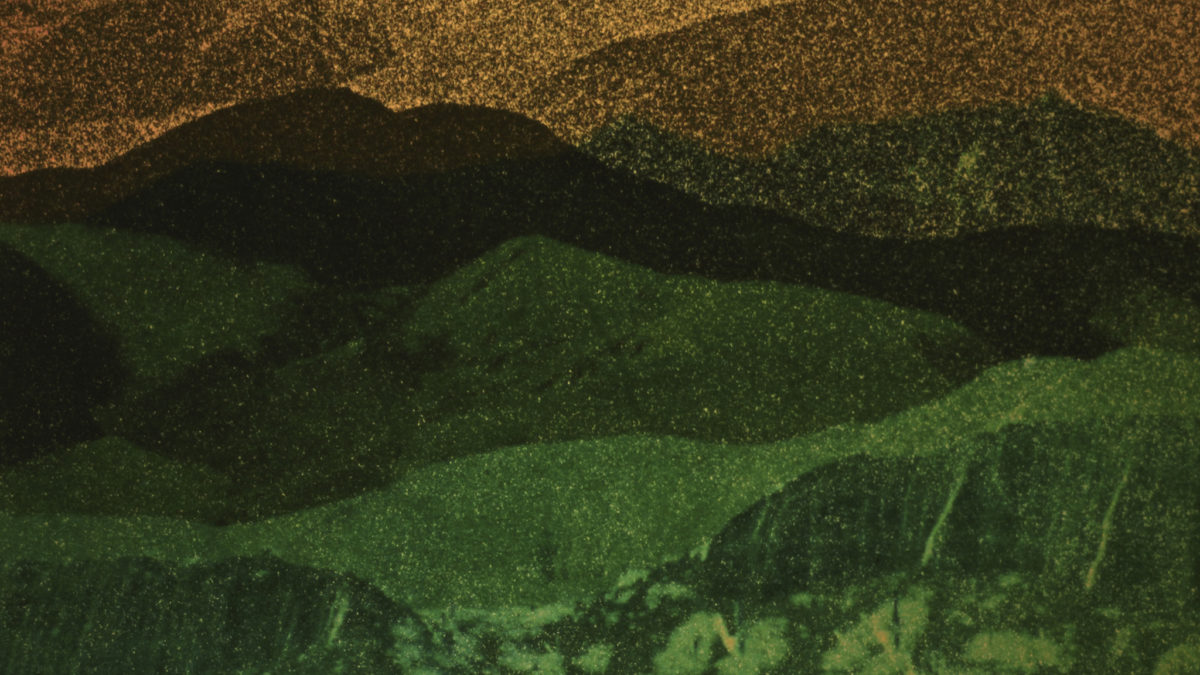Burning waves descend rapidly from a fuming summit; titanic massifs collapse against each other in an apparently infinite landscape; dazzling brushes of light color a vast canvas of nothingness. There’s a primordial essence inherent to natural phenomena which is mostly lost in translation when replicated through human codes, be it the written word or the moving image.
The more “well regarded approaches” to natural spirits are usually strains of documentary filmmaking, like the poetic essay film seeking to evoke the formidable in its ostentatious voice-over musings, or the ethnographic endeavor showcasing the elemental forces’ immenseness by focusing on their impact on cultural practices and human mythology. Even if commendable for what they set out to do, these methods do rely heavily on a very human idea of aestheticization; one that in its calculated ethos eludes the raw and chaotic core of these spectacles. Such restraints aren’t (or at least shouldn’t be) really present in experimental filmmaking, where sensory expansion and audiovisual subversion are ingrained as guiding principles.
Taking advantage of the freedom innate to said cinematic path (and the short film format), some standouts from the 50th International Film Festival Rotterdam’s Ammodo Tiger Short Film Competition fully subsume themselves in their unorthodox explorations of primeval processes.

Iranian filmmaker and photographer Newsha Tavakolian’s For the Sake of Calmness, for example, incorporates the limits of visual representation as part of its core intent. Knowing the difficulties that arise when film tries to portray concepts as amorphous as the ones her short embodies (Premenstrual Syndrome and the more severe Premenstrual Dysphoric Disorder), she cleverly decides to instead engulf the spectator with a three-dimensional overload that resembles the experience. From the opening shot, a female voice-over narration takes center-stage, and in opposition to what’d probably be expected from a work dealing with this kind of topic, its contents have little to do with any kind of didactic text. Tavakolian delivers a poetic monologue, describing situations of discomfort that aim to evoke the feel of PMS, not describe it. Looming behind her voice is a constant drone of mid-pitch dissonance that progressively befuddles, amplifying the haunting aura of malaise present in each one of the hyper-stylized scenes we see melt into each other by way of glacially slow dissolves.

Luces del desierto, the second filmic foray of French sound artist and director Félix Blume, also playfully engages with the aural as protagonist. Self-described as a horror movie, the 30-minute short consists of multiple testimonies from residents of the Mexican desert regarding the strange lights they’ve seen haunting the nearby skies. By avoiding any use of artificial lightning, Blume’s digital camera willfully dwells in absolute darkness; frames only distinguished between each other by the occasional beam of a flashlight or spontaneous lightning strike. Our main sense of reference is taken hostage, leaving only a path to wander blindly on, led by the sonic queues of an unknown and terrifying setting seemingly populated solely by unidentifiable creatures and uncaring natural forces. As we get deeper and deeper into the desert, the stories being told begin to embody the uncanny: disappearances with no explanation; mechanical roars like nothing that’s been heard before; piercing trumpets coming from places no man should be. Suddenly, we’re a living part of the myth.

Renowned Montreal-based filmmaker Daïchi Saïto is no stranger to seizing disorientation as an opportunity for profound sensory experiences, and his latest is a pretty distinctive entry into his own personal canon. earthearthearth, as it’s called, takes the Japanese artist’s caustic relationship with environmental pulsations, and reworks it towards a contemplative trance. In this instance the Andes mountainscapes are the main protagonists, and just as their visual reference is established, they begin to mutate. Film grain and celluloid scratches distort the 35mm images as the cacophonous improvisational score of saxophonist Jason Sharp erases any remaining grasp of figurative audiovisual language. All of the sudden, dusk and dawn are juxtaposed, and ethereal silhouettes encompass the entirety of the screen.
As with For the Sake of Calmness and Luces del desierto, the concrete elements which ground us in our perceived reality are gradually warped beyond recognition. The very veil of cohesive and unified sensoriality is lifted from our eyes, and we’re confronted with a purer form of understanding; drifting realms of meaning that in their disrupted essence submerge us in primal energies we wouldn’t feel otherwise.
